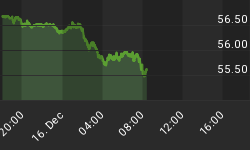by James Hyerczyk
June 13, 2010
The U.S. Dollar traded higher against most major currencies on Friday, but lower for the week. Technically, the Dollar Index posted a weekly closing price reversal top which could lead to the start of a 2 to 3 week break if confirmed next week. The Dollar Index chart indicates there is room to retrace back to 84.92.
The EUR USD traded slightly lower after the four-day rally fell just short of a minor 50% price level at 1.2164. The daily chart indicates that a near-term break to 1.2014 is likely if selling pressure prevails. This price could prove to be strong support if traders try to form a secondary higher bottom.
On the upside, 1.2164 to 1.2233 continues to be an objective, but Friday's daily closing price reversal top indicates that selling pressure may be building.
The weekly Euro chart paints a more upbeat picture as this market is poised to post a weekly closing price reversal bottom. Once confirmed, this pattern suggests a 2 to 3 week rally or a move to 1.2784.
The direction of the Euro next week hinges on trader perception of risk. Last week the Euro went through a relatively quiet period. Fed Chairman Bernanke helped to support the Euro by saying that the European Union has the means and the money to prevent a collapse in the currency, while European Central Bank President Trichet boosted the single currency by stating the ECB would not expand liquidity measures.
The British Pound traded sharply lower on risk concerns and bearish U.K. economic data. Last week's three day rally fell short of testing a main top at 1.4769 and a 50% price level at 1.4810 before buying interest dried up. At the close this market was testing a short-term retracement zone at 1.4499 to 1.4435. This area must hold or the current secondary higher bottom pattern will be at risk.
The USD CHF finished higher, boosted by the lower Euro and thoughts of another round of Swiss Bank intervention. The downside target remains.1.1326 but the market may have to retrace to 1.1563 to 1.1603 before new selling pressure emerges.
The mixed trade in U.S. equity markets today caused a sideways trade in the USD JPY. For most of the day, this currency pair hugged at a major 50% price level at 91.61. This price is acting like a pivot. The Dollar/Yen will strengthen above it, but weaken below it.
The Dollar/CAD finished slightly better but inside of Thursday's range. A drop in demand for riskier assets led by the break in U.S. equities is the catalyst behind today's strength. The main trend is down on the daily chart and likely to continue to weaken if U.S. equity markets continue to rise. The fact that New Zealand increased interest rates is a sign that the Bank of Canada is likely to do the same in July.
Weaker equity markets and the disappointing U.S. Retail Sales Report pressured the AUD USD at the mid-session but this market made a full recovery into the close. Traders were paring long positions on the notion that the global economic recovery may not be as strong as previously estimated. Technically this pair stopped short of breaking out above the last main top at .8550. The late session recovery in U.S. equity markets helped trigger a short-covering rally in the Aussie which put it in position to blast off to the upside this week. Upside momentum could trigger a steep rally to .8727.
The NZD USD closed on its high after turning the main trend up on the daily chart earlier in the day. The first upside objective is a 50% price level at .6942. Holding about this level targets .7033. The Kiwi was boosted by greater demand for risky assets on Friday, but the rally was set in motion earlier in the week when the Reserve Bank of Australia raised interest rates, initiating its tightening cycle. In addition, upbeat commentary by the RBNZ helped provide some fuel for the rally.
















